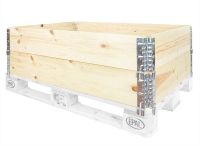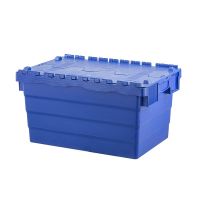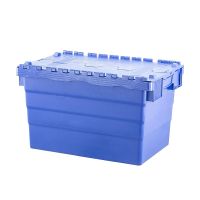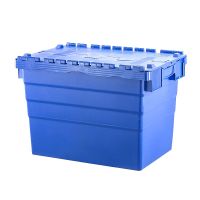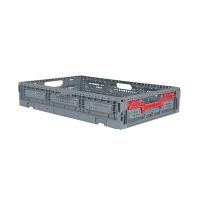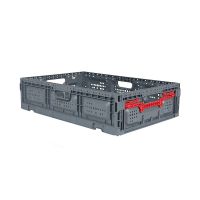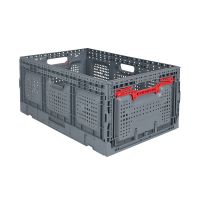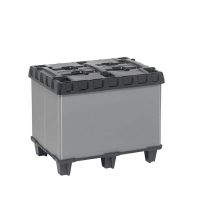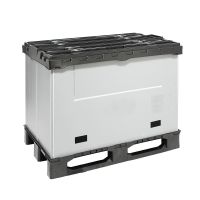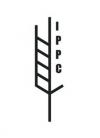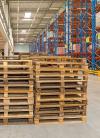Are corporate social responsibility and sustainable development just fashionable slogans in the logistics industry? Well no. Today, building a sustainable supply chain is not a choice but a necessary part of any business model and the number one task for operations and logistics managers.
We live in times of increasing challenges related to climate change, disruptions to supply chains resulting from the Covid-19 pandemic, and natural disasters. Currently, the situation is so serious that it is unacceptable to ignore the impact of the organization on the environment or disregard for the needs of employees.
A typical consumer company's supply chain is estimated to be responsible for more than 80% of greenhouse gas emissions. It affects not only environmental losses but also corporate profitability. So building a sustainable business is a matter of adapting to survive in a changing world.
What is a sustainable supply chain?
Sustainable development is about more than being green and environmentally friendly. This business management system based on the combined operational effectiveness of strategies aimed at minimising waste in work processes, energy and raw materials.
To achieve a sustainable supply chain, a company must address environmental, social, economic and legal issues throughout the supply chain. This approach will reduce the amount of waste and environmental footprint and improve the working conditions and the health and safety of workers.
How do the Consumers view the pursuit of sustainability?
Studies conducted reveal that most consumers prefer to buy from brands that offer 'green', environmentally friendly products and services. Unilever, in partnership with Europanel and Flamingo, found in its research that a third of consumers (33%) prefer buying from brands that they believe work positively for the environment. The study asked 20,000 adults from five countries how their concerns about sustainability influence their purchasing choices. More than a fifth (21%) of those surveyed said they would actively choose brands if they made their sustainability credentials clearer on the packaging and in marketing.1
Will sustainability investment pay off?
There is a common misconception that reducing a company's environmental impact is expensive. In reality, it can result in savings. By reducing waste and making your buildings, vehicles and packaging more efficient, you can quickly see a return on your costs.
Companies with high ratings on environmental, social and governance factors (ESG) are found to have a lower cost of debt and equity, according to McKinsey research involving more than 4,000 companies and 340 executive respondents. More than 89 per cent of the studies analysed found that companies with high ESG ratings outperform the market in the medium (three to five years) and long-term (five to 10 years).2

Economically, these efforts result in billions of euros in savings and increased sales for companies large and small. Socially responsible business practices support the planet, people who live here, and also business growth.
How to transform your business into a more sustainable one?
Redesigning supply chains, investing in new packaging for product distribution and creating cost-effective return processes can be challenging at first. But taking even small steps towards sustainability is progress.
Of course, there is no magic formula, no one-size-fits-all recipe for every company in every industry. What we offer here are some helpful tips to get the process started.
1. Reduce losses and waste
Businesses actively practising sustainability focus on reusable packaging, green supply chain management (GSCM) and zero waste strategies. The aim is to generate as little (preferably zero) waste as possible. The concept of waste can refer to aspects such as the continuous use of disposable packaging such as films, stretch tapes and cartons. It also refers to damaged goods that cannot be repaired and resold.
It is worth analysing at what stage of the supply chain a lot of disposable packaging is used in your business and what could be used to replace it. For example, instead of constantly wrapping the pallet load with stretch film, would it not be better to use pallet collars or specially dedicated, designed packaging, which would serve in a closed-loop for many years?
2. Integrate RFID technology into your processes
It is incredibly useful to use packaging tracking technology. It allows you to gain accurate, real-time information on where is a particular package.
This setup enables producers to plan ahead and also respond quickly to changing industry dynamics and sentiment, including sudden peaks in demand. As an experienced logistics partner, we fully handle management of the packaging workflow. We use technology and know-how to recommend the best packaging solutions for companies, as well as design custom packaging to fit specific needs.
3. Pooling, i.e. let your packaging work all the time
One way to reduce the total cost of ownership is to implement reusable packaging materials that work in circulation. Rotom has warehouses across Europe, so by using a pool of reusable transport packaging we provide a significant improvement in transport, handling and storage processes. By using the pooling service you reduce unit and mileage costs which is environmentally friendly and provides a more transparent supply chain. Our blog discusses the benefits of packaging pooling in the article Pooling packaging in logistics - learn about the benefits.
4. Don't generate extra waste, we will buy unnecessary packaging from you
When implementing a sustainable supply chain process, it is essential to identify areas where you can reduce packaging waste. If you no longer need pallets, extensions or another post-peak packaging, we can buy it back so that you get warehouse space and a refund.
By using buyout of pallets, pallet collars, metal containers and other packaging, you give them a second life. In this way, we jointly care for the environment as we carry out extensive activities aimed at bringing used pallets back to the market without using new forest resources.
5. Streamline your processes using package rental
Let's not forget that sustainable logistics is not just about reducing costs, minimising waste and improving efficiency. The most important driving force is always customer satisfaction. So, while as a producer you may have the most efficient supply chain and an effective JIT inventory management system, all this is irrelevant when a customer's order is not delivered on time or to their expectations.
In emergencies where you need urgent packaging for peak times, supply disruptions, renovations and other circumstances, the ideal solution is packaging rental.
Business sustainability means working in partnership
The impact of the global Covid-19 pandemic has led many manufacturing companies to see the value of partnering in overcoming adversity and supply disruptions. A good logistics partner with specific data insights can help a business get to an even higher 'level' of sustainability. It can help tailor solutions to minimise carbon emissions, pollution, disposable packaging. It will also enable the use of rapid response services to change market situations.
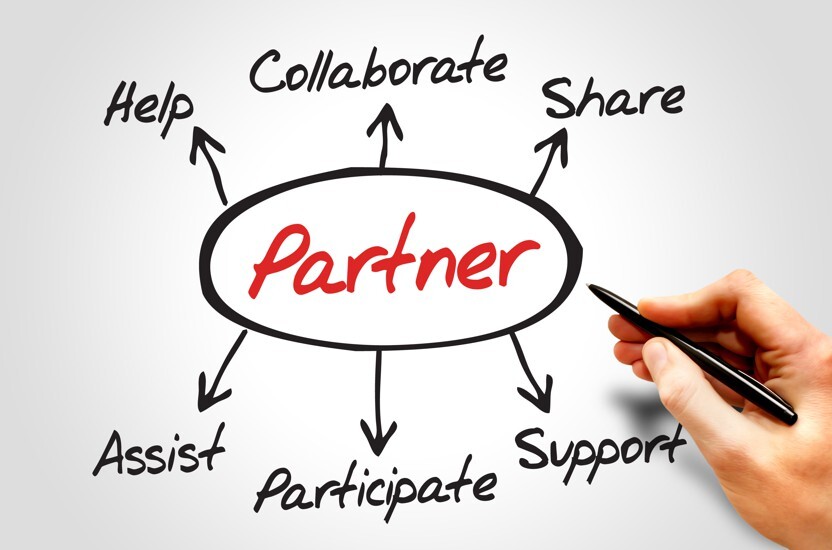
Rotom has been offering customers well designed and proven supply chain optimization for many years. Our specialists work in partnership with customers and suppliers offering mutual support in problem solving, transparency of operations and exchange of information necessary for proper planning of activities along the supply chain. Have questions about implementing sustainable packaging in your company? Send your inquiry and we will support you every step of the way
Sustainability is not a slogan
It is a way of developing wisely that offers benefits to businesses, suppliers, investors and consumers alike. Such action attracts customers who are becoming increasingly aware of their impact on the environment. To keep up in this competitive environment, you should always strive forward and exceed your partners' expectations.




